Design a Year-round Shade Container
These six plants will ensure your pot looks good in every month

When thinking of creating container gardens, sun-loving plants usually come to mind. However, the Mid-Atlantic gardener can put together a wonderfully textured container focusing on shade plants. Here are a couple of tips for a pot full of texture and color made for the shade.
First, choose your color palette
In the above shade container, I used rich hues such as copper, burgundy, and brown. These colors appear in the foliage instead of the flowers. When selecting plants with a range of foliar color, flowers are a bonus to an already interesting combination.
Select plants with contrasting textures
Plants with various textures add a level of interest by using shapes of leaves and stems that dramatically differ. For example, if you use a sedge (Carex spp. and cvs., Zones 3–10), lirope (Lirope muscari, Zones 5–10), and ornamental grass together, the effect will be a big jumble of long leaf blades, and there won’t be much to look at. But if you use a sedge with a geranium (Geranium spp. and cvs., Zones 4–8) with bold foliage, the plants will be distinct and noticeable. If you are using multiple flowering plants, leaf texture also fills gaps between the flowering times of plants. During the lull in flowers, the plant combination will remain interesting.
Here is the ingredient list I used to create the above container design. The following plants grow well in partial shade, and many are derived from species native to the Mid-Atlantic region.
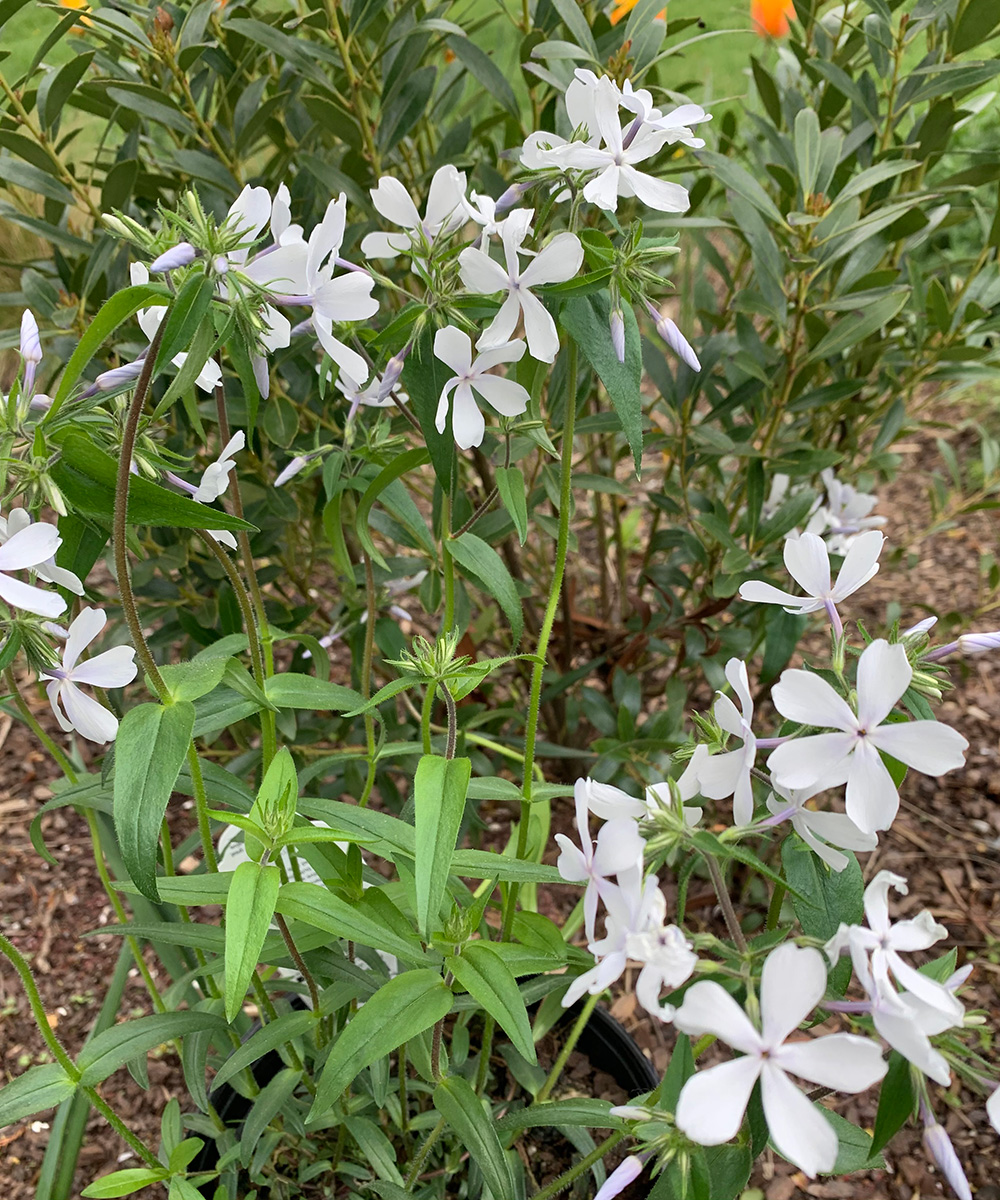
‘May Breeze’ woodland phlox
Phlox divaricata ‘May Breeze’, Zones 4–8
This delicate-looking plant is beautiful in and out of bloom. Boasting very pale blue, almost white, flowers in early to late spring, its bright colors pop in a shady spot. The foliage after flowering acts as wonderful filler, creeping into empty spaces of a container. ‘May Breeze’ reaches 12 to 15 inches tall.
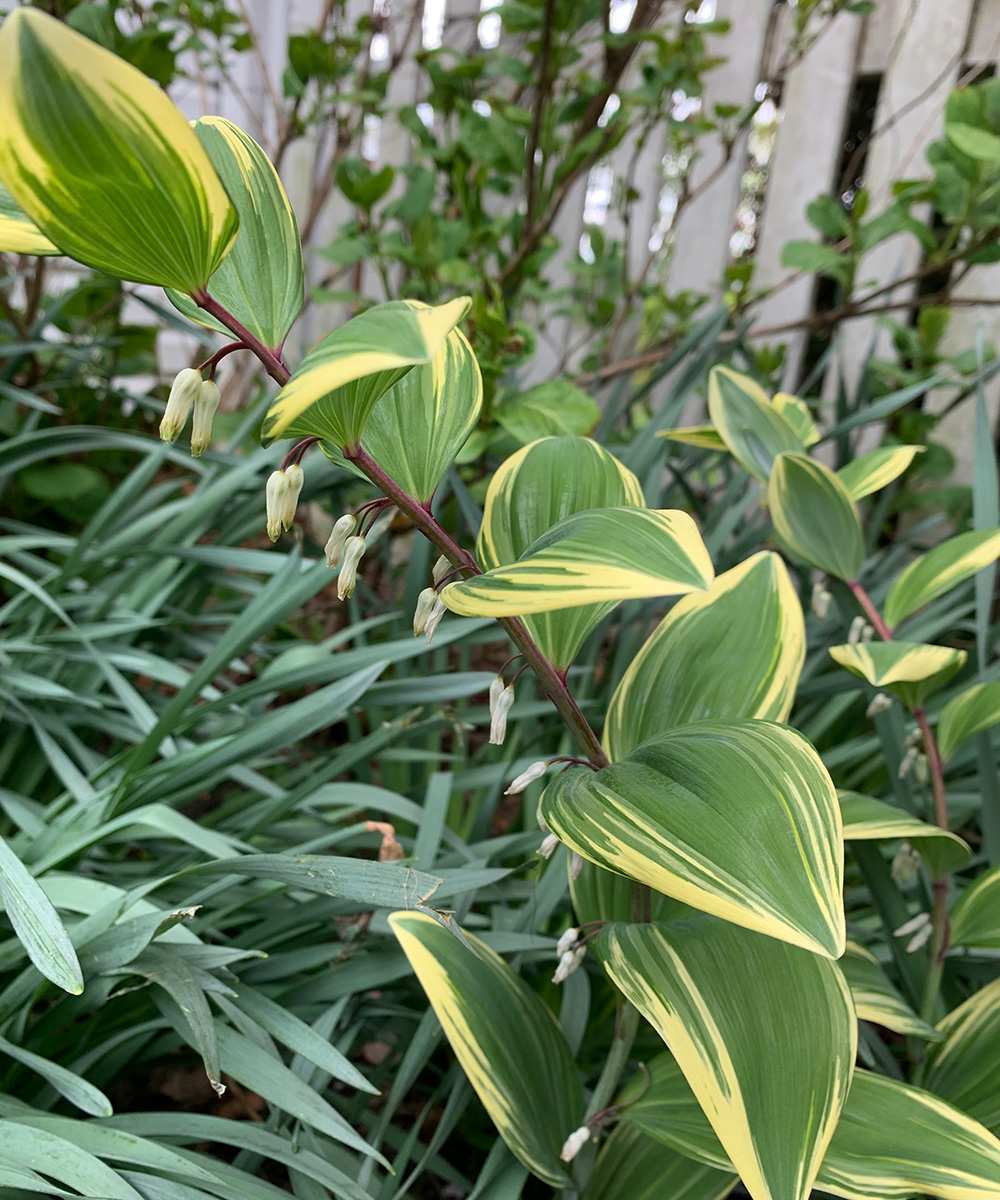
Variegated Solomon’s seal
Polygonatum falcatum ‘Variegatum’, Zones 3–9
Although it’s not the native Solomon’s seal (P. biflorum, Zones 3–8), I chose this hardy Japanese species because of its 2- to 3-foot mature height and slender stems. The striking variegated foliage sneaks through other, denser plants as the plant gets taller. The very narrow stems are a great accent at the back of the pot, and the dainty white flowers dangle from the underside of the stems like jewelry.
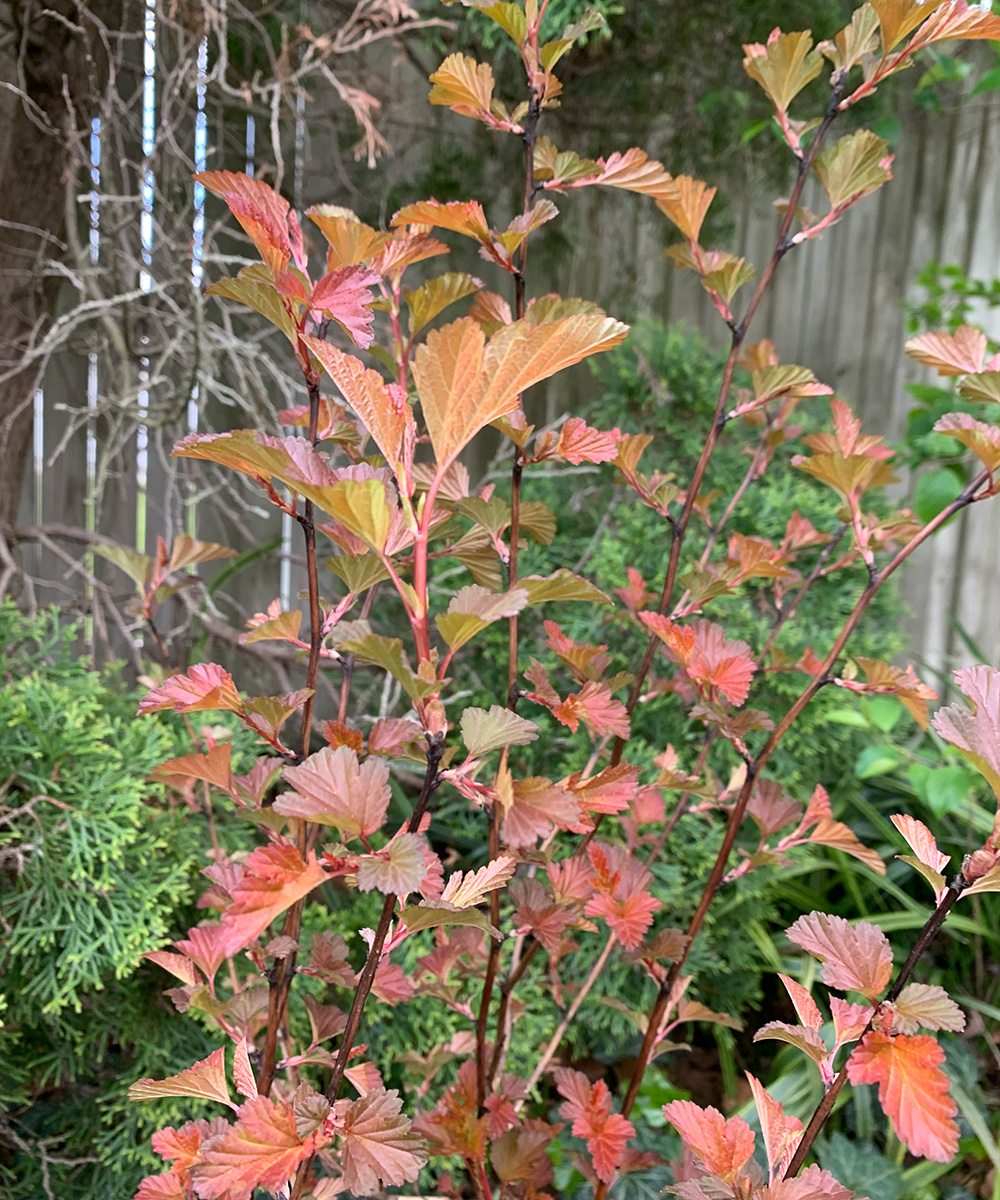
Coppertina® ninebark
Physocarpus opulifolius ‘Mindia’, Zones 3–7
Yes, this shrub can and will get big. So be sure to buy a small-size plant that you can keep in a pot for a couple of seasons. It will form the backbone of any container with its beautiful copper-bronze foliage and its abundant curved stems. This nativar is a great shrub for containers, as it can tolerate temperatures down to –40°F when planted in the ground, so it is sure to survive our Mid-Atlantic winters. The bark has wonderful winter interest, which can be complemented by adding some cut greens around the holidays.
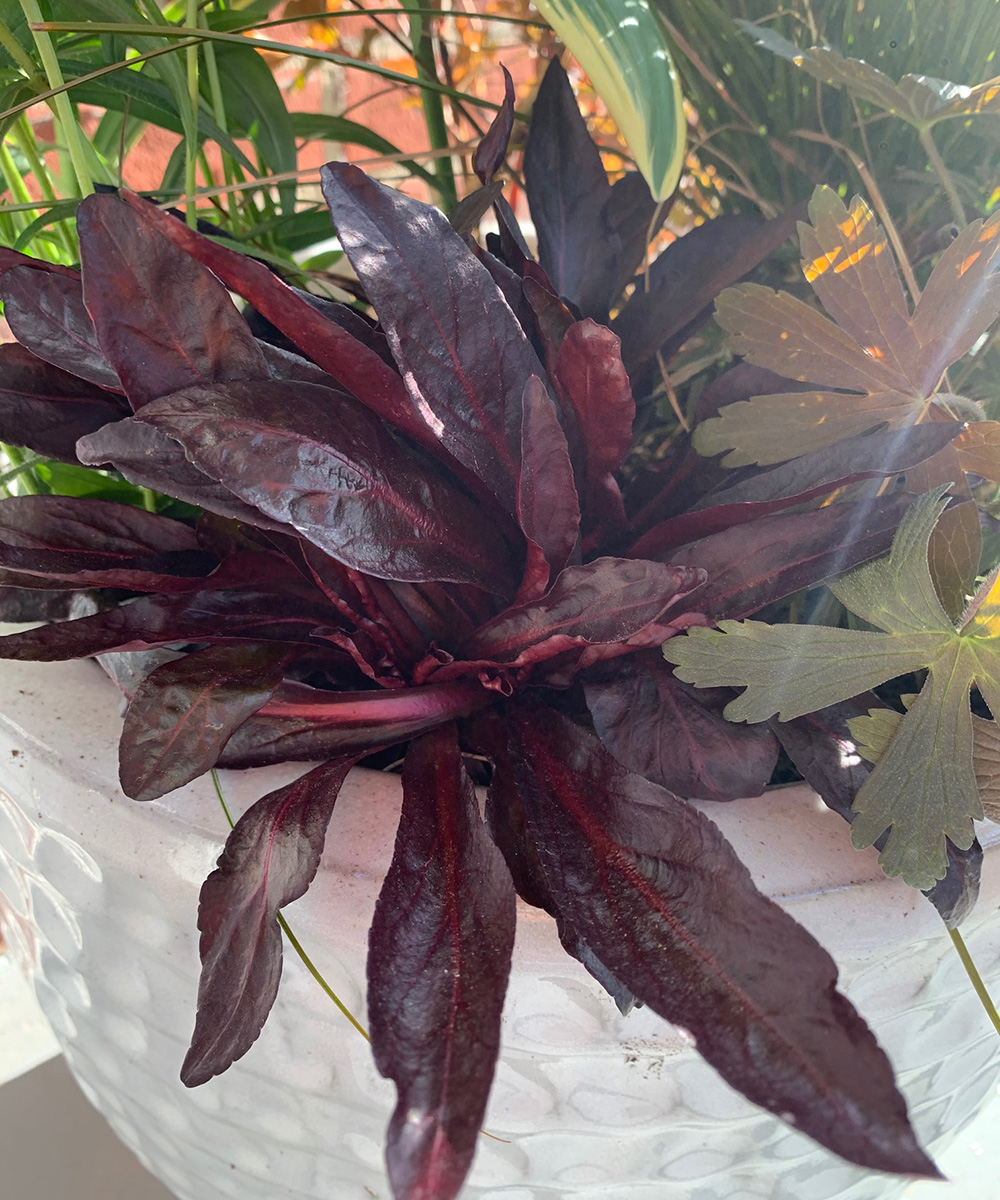
‘Queen Victoria’ lobelia
Lobelia cardinalis ‘Queen Victoria’, Zones 3–10
This native cultivar has deep, rich burgundy foliage. When it blooms it can reach up to 3 feet tall but typically holds steady around 2 feet tall. This tough plant sports bright red flowers, attracting hummingbirds and butterflies.

‘Espresso’ geranium
Geranium maculatum ‘Espresso’, Zones 3–8
Another nativar, this tough plant has palmate leaves that provide excellent texture. The stems tend to spread out, intermingling with other plants in the container. The pale pink flowers sit atop chocolate-colored foliage throughout the spring. ‘Espresso’ geranium reaches about 1½ to 2 feet tall and 2 feet wide.
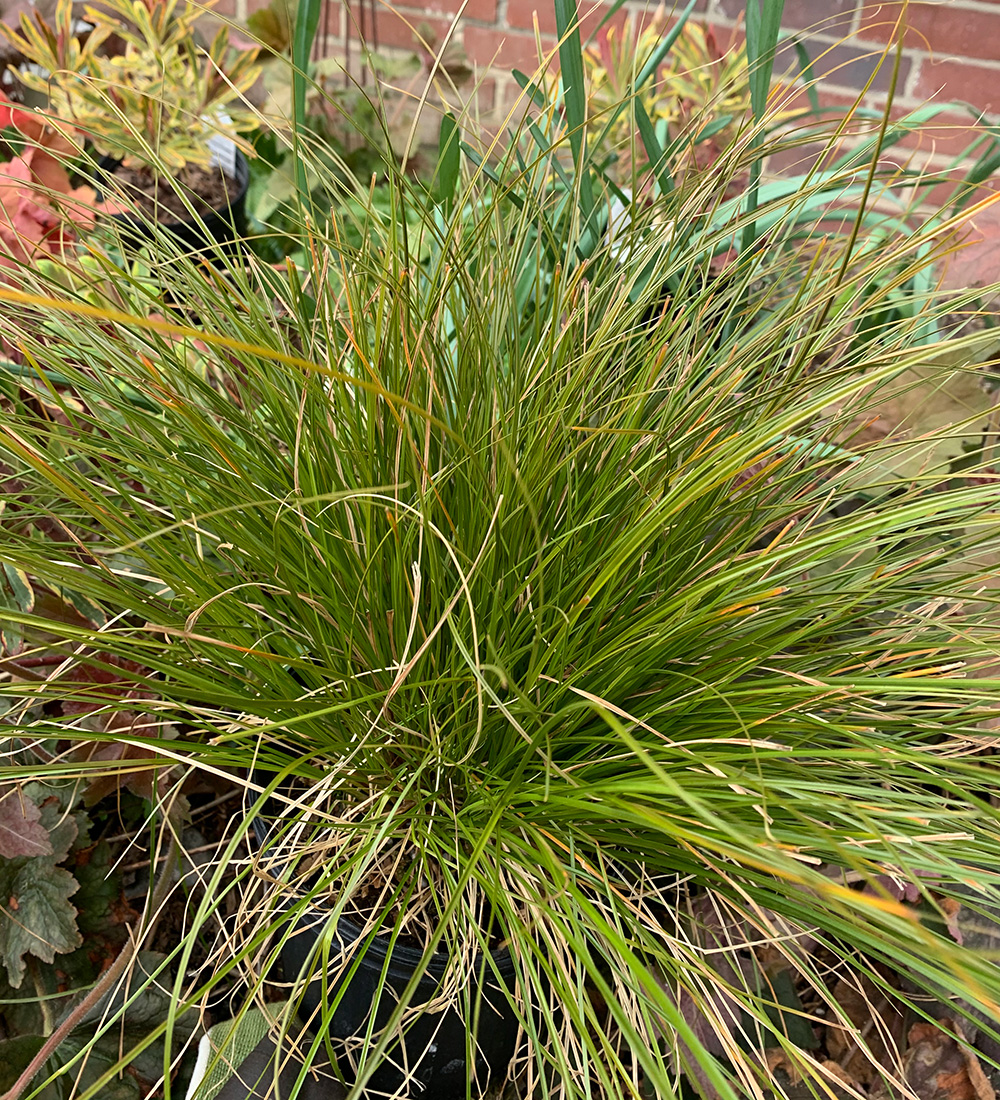
Prairie Fire™ sedge
Carex testacea ‘Indian Summer’, Zones 6–9
I chose this fine-textured New Zealand native to spill over the side of my container to soften the edges of the design. Reaching 18 to 24 inches tall, the beautiful olive-green foliage becomes copper when the weather turns a little cooler. It also tends to be evergreen in Zones 6 to 9, so it will pair well with Coppertina® ninebark and cut boughs during the winter months.
One of the advantages of creating a container garden is the ability to break rules you would normally follow when planting garden beds. You can put plants together tightly, knowing they can be easily manipulated to achieve your desired look. When you are choosing perennials and shrubs for a container, the sky is the limit, as they can be easily transplanted into the ground when it is time to switch out the plants.
—Michele Christiano has worked in public gardens for most of her career. She lives in southern Pennsylvania and currently works as an estate gardener maintaining a private Piet Oudolf garden.






Comments
Log in or create an account to post a comment.
Sign up Log in